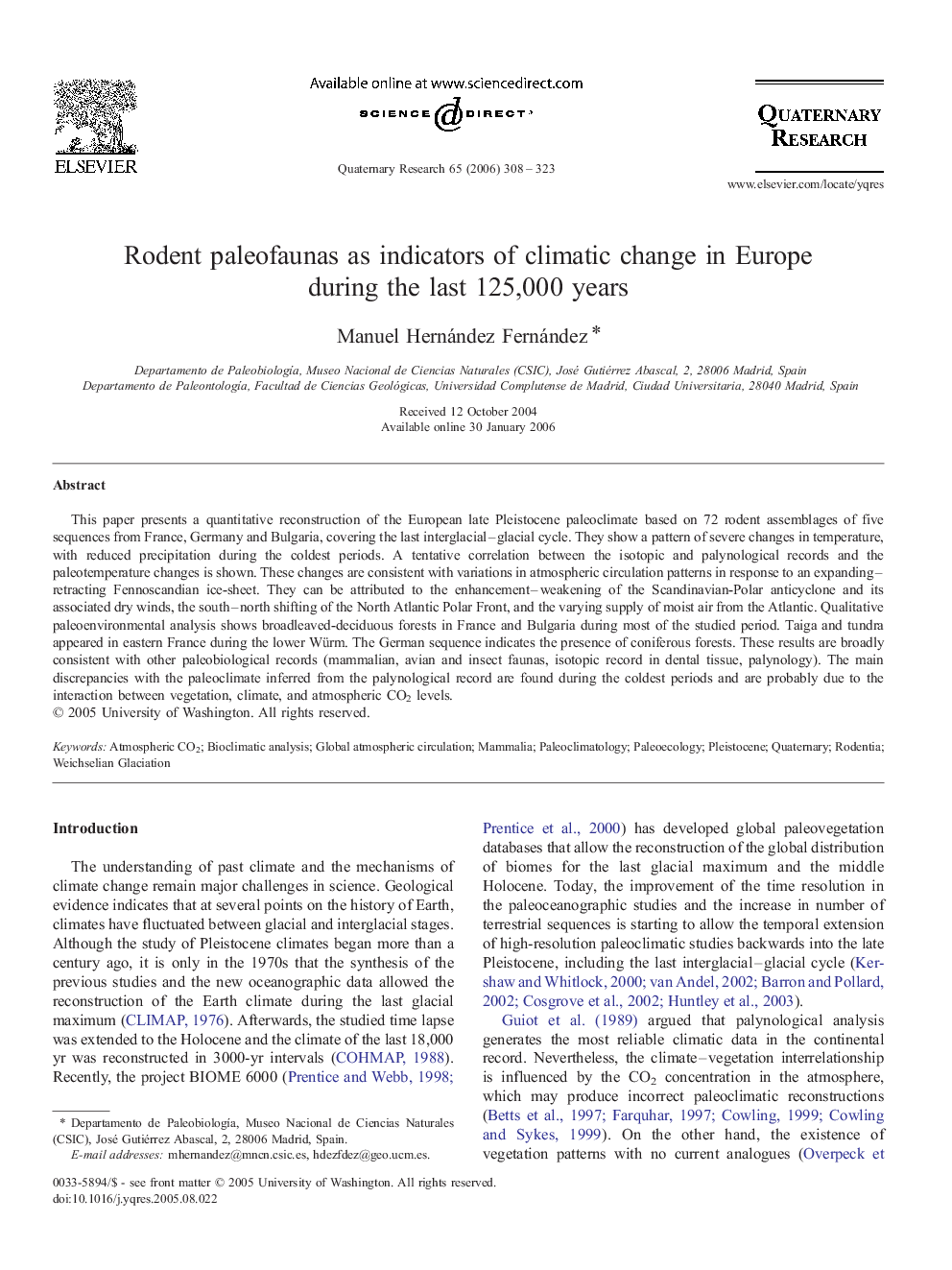| Article ID | Journal | Published Year | Pages | File Type |
|---|---|---|---|---|
| 1046182 | Quaternary Research | 2006 | 16 Pages |
This paper presents a quantitative reconstruction of the European late Pleistocene paleoclimate based on 72 rodent assemblages of five sequences from France, Germany and Bulgaria, covering the last interglacial–glacial cycle. They show a pattern of severe changes in temperature, with reduced precipitation during the coldest periods. A tentative correlation between the isotopic and palynological records and the paleotemperature changes is shown. These changes are consistent with variations in atmospheric circulation patterns in response to an expanding–retracting Fennoscandian ice-sheet. They can be attributed to the enhancement–weakening of the Scandinavian-Polar anticyclone and its associated dry winds, the south–north shifting of the North Atlantic Polar Front, and the varying supply of moist air from the Atlantic. Qualitative paleoenvironmental analysis shows broadleaved-deciduous forests in France and Bulgaria during most of the studied period. Taiga and tundra appeared in eastern France during the lower Würm. The German sequence indicates the presence of coniferous forests. These results are broadly consistent with other paleobiological records (mammalian, avian and insect faunas, isotopic record in dental tissue, palynology). The main discrepancies with the paleoclimate inferred from the palynological record are found during the coldest periods and are probably due to the interaction between vegetation, climate, and atmospheric CO2 levels.
